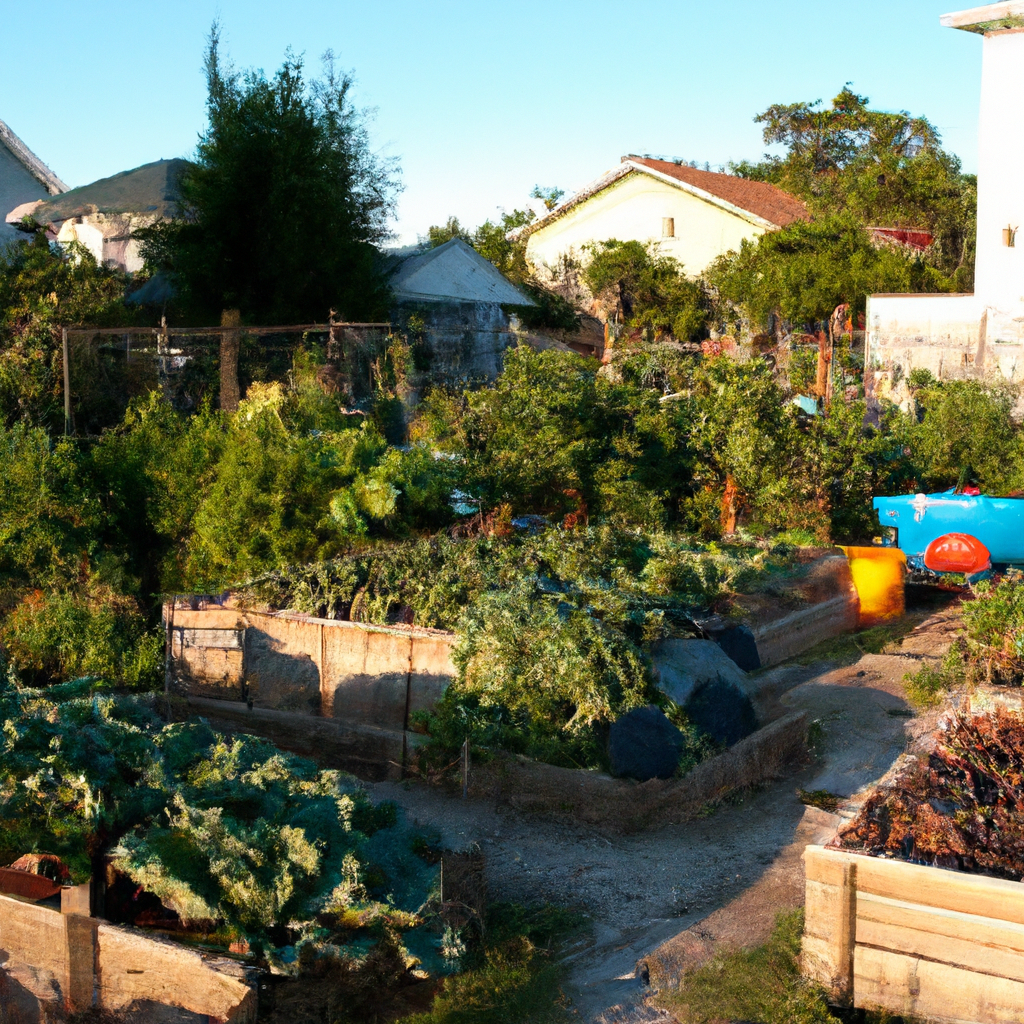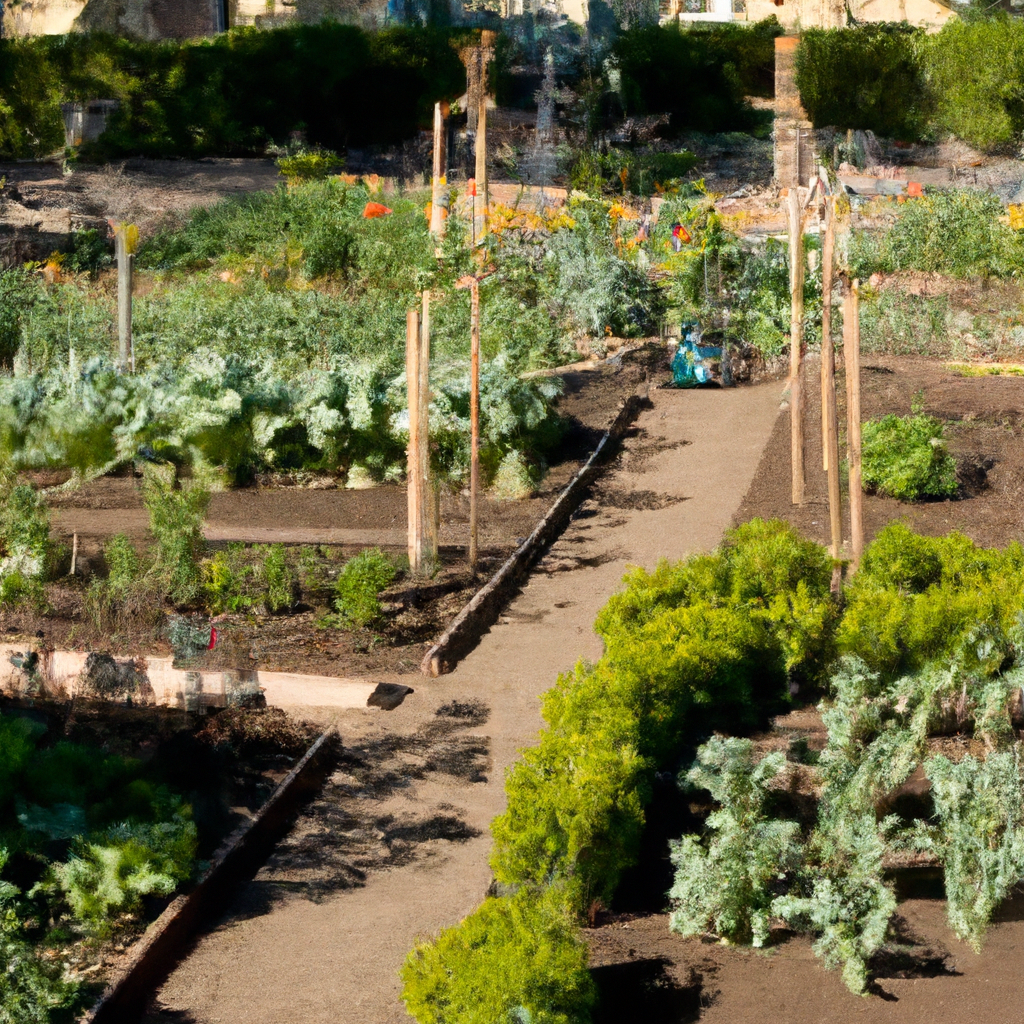
If you’ve ever dreamed of cultivating your own urban oasis, filled with vibrant greens and a sense of self-sustainability, understanding zoning regulations for urban farming is your starting point. From backyard gardens to rooftop greenhouses, this article will guide you through the maze of permits and regulations that govern this burgeoning movement. Discover how to make your urban farming dreams a reality while staying on the right side of the law.

Understanding Zoning Regulations for Urban Farming
Urban farming has gained significant popularity in recent years as a means of promoting sustainable agriculture, supporting local food production, and enhancing community engagement. However, before embarking on an urban farming endeavor, it is important to understand the zoning regulations and permits that govern such activities. Zoning regulations play a crucial role in determining what types of activities are allowed in different areas of a city or town. By familiarizing yourself with these regulations, you can ensure that your urban farming project is in compliance with the law and avoid potential conflicts or setbacks.
Types of Zoning Regulations
Zoning regulations can vary depending on the location and specific city or town ordinances. However, there are generally four main types of zoning designations that may impact urban farming: residential zoning, agricultural zoning, commercial zoning, and mixed-use zoning.
Residential Zoning
Residential zoning primarily designates areas for housing and restricts the types of commercial or agricultural activities that can take place. In some cases, small-scale urban farming may be allowed in residential zones, especially if it is considered an accessory use or if the area is zoned for mixed-use.
Agricultural Zoning
Agricultural zoning is specifically intended for agricultural activities and allows for larger-scale farming operations. These zones may have specific requirements for land use, lot size, setbacks, and other factors that are tailored to support farming activities. Urban farming may be more easily accommodated in areas zoned for agriculture, but it is important to review the specific regulations in order to comply with any restrictions or guidelines.
Commercial Zoning
Commercial zoning is intended for commercial activities such as retail, office spaces, and industrial operations. These zones generally have stricter regulations on land use and may not be the most suitable for urban farming. However, some cities have created specific provisions or permits to allow for limited urban farming activities in commercial zones, particularly if it aligns with the goals of sustainability and local food production.
Mixed-Use Zoning
Mixed-use zoning combines various types of zoning designations within a defined area. This allows for a mix of residential, commercial, and potentially agricultural activities. Urban farming is often more compatible with mixed-use zoning, as it allows for a combination of different land uses within a more flexible framework. However, there may still be restrictions or requirements specific to urban farming operations in these zones, so it is essential to review the regulations carefully.

Key Factors in Zoning Regulations for Urban Farming
When considering urban farming, there are several key factors within zoning regulations that you should be aware of.
Land Use
Zoning regulations define the allowable land uses for different areas within a city or town. Determining whether urban farming is permitted in a particular zone is crucial in order to avoid potential conflicts or penalties. It is important to check the zoning designation of the land you intend to use for urban farming and verify that it permits agricultural activities or has allowances for mixed-use.
Lot Size and Setbacks
Lot size and setbacks refer to the minimum requirements for the size of the land parcel and the distances that must be maintained between buildings, property lines, and other structures. These requirements are intended to ensure safety, aesthetics, and prevent overcrowding. Urban farming operations must comply with these regulations to ensure that they do not encroach on neighboring properties or violate the specified minimum lot size.
Building Height and Size Restrictions
Zoning regulations may also dictate the maximum height or size of buildings within a particular area. These restrictions are in place to maintain the character and scale of the neighborhood and prevent excessive development. Urban farming operations that involve the construction of structures such as greenhouses or vertical gardens must adhere to these regulations to avoid potential conflicts or non-compliance.
Noise and Odor Regulations
Urban farming operations, particularly those involving animal husbandry or composting, may generate noise and odor. Zoning regulations often include specific restrictions on noise levels and odor emissions to ensure the comfort and well-being of neighboring residents or businesses. It is essential for urban farmers to be mindful of these regulations and implement measures to minimize any potential noise or odor nuisances.
Permitting Process for Urban Farming
Once you have determined the zoning regulations applicable to your urban farming project, the next step is to obtain the necessary permits. The permitting process can vary depending on the location, but it generally involves the following steps:
Obtaining Necessary Permits
Contacting the local planning or zoning department is the first step in determining the specific permits required for your urban farming project. Depending on the scale and nature of your operation, you may need permits for land use, construction, business licensing, environmental assessment, or health and safety compliance. It is important to familiarize yourself with the specific requirements and ensure that you obtain all necessary permits before starting your urban farming endeavor.
Submitting a Site Plan
A site plan is typically required as part of the permitting process for urban farming. This plan outlines the layout of the proposed farming operation, including the location of buildings, cultivation areas, and infrastructure. The site plan should also specify any planned mitigations for noise, odor, or other potential impacts. It is important to prepare a detailed and accurate site plan to facilitate the review and approval process.
Public Notice and Input
Depending on the jurisdiction, certain urban farming projects may require public notice and input. This may involve notifying neighboring residents, hosting public hearings, or soliciting feedback through formal channels. Public input allows community members to express any concerns or support for the project, and it provides an opportunity for the urban farmer to address any potential issues or build community support.
Review and Approval Process
The final step in the permitting process is the review and approval by the local planning or zoning department. This typically involves a comprehensive evaluation of the proposed urban farming project to ensure compliance with applicable zoning regulations, health and safety standards, and any other relevant requirements. The review process may require adjustments or modifications to the proposed project, and it is important to be responsive and open to working with the reviewing authority to address any concerns or recommendations.

Potential Challenges with Zoning Regulations
While zoning regulations are meant to guide and regulate urban farming activities, there can be several challenges that urban farmers may encounter.
Limited Availability of Suitable Zoned Land
One of the primary challenges faced by urban farmers is the limited availability of land that is zoned for agriculture or suitable for urban farming activities. In many urban areas, land may be primarily designated for residential or commercial use, making it difficult to find suitable locations for farming. This limitation can present a significant obstacle for those interested in pursuing urban farming as a livelihood or community initiative.
Conflicts with Existing Zoning Codes
Zoning regulations can sometimes be outdated or not aligned with the goals and values of urban farming. Existing codes may not anticipate the unique characteristics or benefits associated with urban farming, resulting in conflicts between the desired activities and what is permitted by the zoning code. These conflicts can create obstacles and require innovative approaches to navigate and adapt the regulations to accommodate urban farming.
Resistance from Local Residents or Officials
Resistance from local residents or officials can pose challenges to the implementation of urban farming projects. Concerns related to noise, odor, traffic, or property values can arise, leading to opposition or reluctance to support urban farming initiatives. Overcoming resistance and building community understanding and support requires effective communication, transparency, and education about the benefits and potential mitigations associated with urban farming.
Cost and Time Requirements for Compliance
Complying with zoning regulations and obtaining the necessary permits can be a complex and time-consuming process. The costs associated with permits, site modifications, or meeting specific requirements may also pose financial challenges for urban farmers, particularly those operating on a small scale or with limited resources. It is important for urban farmers to carefully consider the potential costs and time requirements associated with compliance to assess the feasibility and sustainability of their projects.
Adapting Zoning Regulations for Urban Farming
To support the growth and success of urban farming, it is imperative that zoning regulations adapt to accommodate the unique needs and benefits of these agricultural activities. Several approaches can be taken to ensure that zoning regulations are more inclusive of urban farming:
Inclusion of Urban Farming as a Permitted Use
One effective strategy is to include urban farming as a permitted use within specific zoning designations. This ensures that urban farming activities are explicitly allowed and have clear guidelines to follow. By designating specific zones where urban farming is permitted, cities and towns can provide greater clarity and certainty to farmers interested in pursuing urban farming as a livelihood or community initiative.
Flexibility in Zoning Requirements
Flexibility within zoning requirements, such as reduced setbacks or modified size restrictions, can also support urban farming. Recognizing the unique nature of urban farming and its potential benefits, cities and towns can revise their regulations to allow for more innovative and space-efficient farming techniques. This flexibility can create opportunities for vertical farming, rooftop gardens, or other creative approaches that maximize limited urban space.
Collaboration with Stakeholders for Zoning Changes
Engaging with stakeholders, including urban farmers, residents, businesses, and community organizations, is crucial in the process of adapting zoning regulations. By involving these individuals and groups in discussions and decision-making processes, cities and towns can gain valuable insights and perspectives to inform zoning changes. Collaboration fosters a sense of ownership and builds consensus, leading to more effective and inclusive zoning regulations for urban farming.
Updating Zoning Codes to Accommodate Urban Farming
Periodic updates to zoning codes can incorporate evolving concepts and practices related to urban farming. By conducting regular reviews and revisions of zoning regulations, cities and towns can ensure that their codes are responsive to emerging trends and reflect the best practices for urban farming. This proactive approach allows for the integration of new technologies, techniques, and design principles that can enhance the viability and sustainability of urban farming.

Impact of Zoning Regulations on Urban Farming
Zoning regulations play a critical role in shaping the development and success of urban farming. They have a direct impact on the ability of urban farmers to establish and operate their farms and influence the overall outcomes and benefits of urban farming initiatives. Some of the main impacts of zoning regulations on urban farming include:
Promoting Sustainable Agriculture in Cities
By providing clear guidelines and opportunities for urban farming, zoning regulations promote the expansion of sustainable agriculture within cities. Urban farming allows for the production of fresh, local food, reducing the distance food travels from farm to table and minimizing the carbon footprint associated with transportation. Zoning regulations that support urban farming contribute to more sustainable and resilient food systems.
Supporting Local Food Production and Food Security
Zoning regulations that allow for urban farming contribute to local food production and enhance food security. By enabling the cultivation of food within city limits, urban farmers can provide communities with access to fresh, nutritious produce. This is particularly beneficial in areas with limited access to grocery stores or areas designated as food deserts. Zoning regulations that encourage urban farming play a vital role in improving food equity and reducing reliance on distant food sources.
Enhancing Community Engagement and Education
Urban farming has the unique ability to bring communities together and strengthen social bonds. Zoning regulations that support urban farming can facilitate community engagement by creating spaces for residents to connect, learn, and participate in agricultural activities. Community gardens, shared farming spaces, or educational programs can be integrated into zoning requirements, promoting collaboration and knowledge sharing among community members.
Improving Health and Wellbeing of Urban Residents
Urban farming has been shown to have positive impacts on the physical and mental health of urban residents. Zoning regulations that prioritize urban farming create opportunities for outdoor physical activity and provide access to fresh air and nature within urban environments. The cultivation and consumption of fresh produce also contribute to improved nutrition and overall wellbeing. By embracing and supporting urban farming, zoning regulations have the potential to enhance the health and quality of life for urban residents.
Successful Examples of Zoning Regulations for Urban Farming
Several cities have implemented successful zoning regulations that support and promote urban farming. These examples demonstrate the potential for integrating urban farming into sustainable urban development:
Detroit, Michigan
In response to significant vacant land in the city, Detroit has implemented zoning changes to allow for urban farming in designated areas. The city’s zoning regulations now permit both small-scale and larger-scale urban farms, and Detroit has become a hub of urban agriculture. The zoning changes have opened up opportunities for community gardens, urban farms, and urban farming businesses, revitalizing neighborhoods and improving food access for residents.
Portland, Oregon
Portland has embraced urban farming through flexible zoning regulations that accommodate a variety of farming practices. The city’s zoning codes allow for a wide range of urban farming activities, including community gardens, backyard livestock, and commercial urban farming operations. Portland’s inclusive approach to zoning has resulted in a vibrant and diverse urban farming scene and has garnered national recognition as a leader in urban agriculture.
Toronto, Canada
Toronto has taken a proactive approach to zoning regulations for urban agriculture. The city’s zoning code includes provisions for community gardens, rooftop farms, and urban farms. Toronto’s zoning regulations also allow for the sale of produce directly from urban farms, supporting local food markets and enhancing access to fresh, local food. The city’s commitment to urban farming has fostered a strong sense of community and sustainability.
Seattle, Washington
Seattle has implemented innovative zoning regulations to accommodate urban farming and promote food production within the city. The city’s zoning codes permit a wide range of urban farming activities, including community gardens, urban livestock, and aquaponics. Seattle’s comprehensive approach to zoning regulations supports the local food economy, enhances food security, and creates opportunities for urban residents to engage in sustainable agriculture.

Conclusion
Understanding zoning regulations is crucial for anyone interested in pursuing urban farming. By familiarizing yourself with the different types of zoning regulations, key factors that impact urban farming, the permitting process, potential challenges, and ways to adapt zoning regulations, you can navigate the legal requirements and set yourself up for success. Zoning regulations shape the development of urban farming, and with the right approaches, they can support sustainable agriculture, improve food security, enhance community engagement, and contribute to the well-being of urban residents. With proper planning, collaboration, and compliance with zoning regulations, urban farming can thrive and make a positive impact in our cities and communities.







